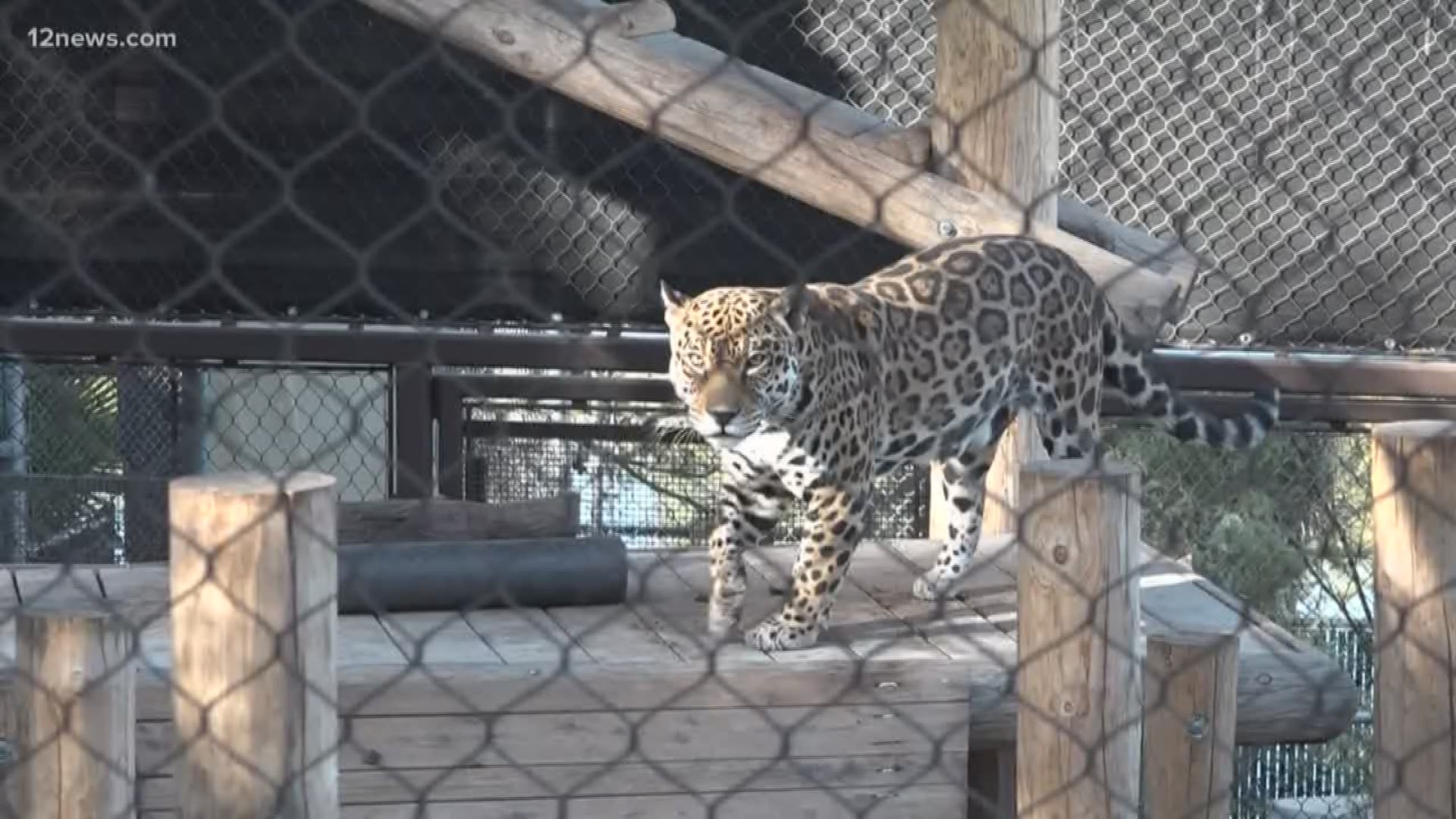PHOENIX - It's not too often that a jaguar walks into a veterinarian's office.
Imagine the surprise when a vet in Gilbert received a call from the Phoenix Zoo requesting treatment for its jaguar.
Caipora is a 12-year-old female jaguar who has been attracting crowds at the zoo for years, but a recent dental exam delivered scary news.
“Veterinarians found a lump on her thigh," carnivore keeper Tim Duett said. "It was about the size of a thimble and testing revealed it was an aggressive form of cancer."
Zoo staff called Eric Boshoven, a veterinary radiation oncologist and owner of Arizona Veterinary Oncology.
Dr. Boshoven treats thousands of dogs and house cats, but a jaguar is once in a lifetime.
“Having a jaguar is amazing," Boshoven said. "They are very stocky, powerful cats and it was amazing working with the team at Phoenix Zoo on this project."
Doctors at the zoo worked to remove the tumor, but Caipora needed more specialized treatment.
"They were unable to remove the whole tumor. They left some of the microscopic fingers behind and because of that, if nothing else was done, that tumor will regrow," said Dr. Boshoven.
In a room outfitted with cameras, monitors and caution signs sits a giant machine that is revolutionizing treatment and helped save Caipora.
“The machine is a linear accelerator that allows us to do stereotactic radio surgery," said Dr. Boshoven.
What used to take weeks for treatment is now down to one single treatment for some cases.
“We can give very high doses of radiation to a very finite area of tissue," said Dr. Boshoven.
A day after treatment, Caipora was back at the zoo.
“The only thing you’ll notice post-surgery is localized hair loss, but she's back to her normal rambunctious self," Duett said. "Her appetite, mobility and behavior is all normal."
Thanks to this state-of-the-art treatment, Caipora will continue wowing zoo-goers with her beauty and grace.
"We will continue to monitor her and only time will tell if she's fully cured," said Dr. Boshoven.

